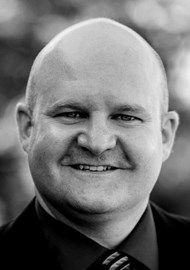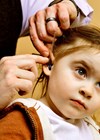Diagnosis and management of a patient with chronic subjective tinnitus is one of the most labour-intensive areas of hearing healthcare. This is one reason some hearing care providers opt to exclude specialised tinnitus care from their practice: it may not be cost effective. In this article, however, Dr Leyendecker reviews what it takes to provide excellent care and be compensated accordingly.
Providing audiologic care in the private sector can be profitable, and specialised tinnitus care is no different. Starting a tinnitus private practice for audiology is rewarding, both emotionally and financially. There is a shortage of audiologists worldwide, including in the United Kingdom (UK), creating a fantastic opportunity to open a private specialised practice.
It is estimated that there are 3000 hearing care providers working for the National Health Service (NHS) and 1000 providers in the private sector in the UK [1]. That means there is an estimated 16,805 patients with auditory disorders for every audiologist in the UK [2]. On top of the shortage of audiologists, the incidence of tinnitus is growing significantly within the population [3]. There is a need for providers to specialise in areas of audiologic care that are not being covered by government-sponsored clinics: e.g. NHS in the UK and Veterans Administration in the United States (US). Tinnitus is an area that needs specialised care and, most importantly, needs providers who can give a significant amount of clinical time. This time, of course, must be compensated.
Establishing a tinnitus management service
The first step in creating a tinnitus clinic is understanding the basics of what a tinnitus treatment is and how to specialise in it. There are a range of tinnitus training programmes that span from understanding the basics, to triage of basic vs. complex cases, all the way up to providing specialised tinnitus treatment. In the US, the current doctor of audiology (AuD) curriculum is not sufficient in providing high-level tinnitus care and it is best if audiologists engage in further training to be specialised. Training is available for hearing care professionals from any country, from seminars to full specialty certifications. Regardless of the intensity of the post-university training, it is important to also establish a mentor who has experience working with tinnitus, and to connect with them regularly to work through difficult scenarios.
Once training is complete and the new specialist has developed comfort with seeing tinnitus patients, it is time to design a protocol. As mentioned earlier, proper treatment for tinnitus patients requires a significant time investment. Initial assessments in our clinic are two-and-a-half hours, with a significant amount of time dedicated to case history. Tinnitus patients have often gone down a long journey trying to figure out why they have tinnitus. They likely have a log of what causes their tinnitus to change and what might make it better. Providing time to discuss those things shows the provider cares and understands what the patient is going through; this establishes trust, which is vital in establishing the provider-patient relationship. Our office counsels the neurophysiologic model of tinnitus to educate the patient on the reason they likely have tinnitus, where it is coming from, and why they can’t simply cure it by willing it away [4]. Once we have established a thorough understanding of tinnitus, we evaluate their hearing and hearing sensitivity.
Protocol-driven clinical assessment of tinnitus
There is no standardised protocol for evaluating a tinnitus patient in the booth; however, there are standard tests that should be included in everyone’s diagnostic protocol. A standard protocol in our office is designed to be efficient and concise, as being in a quiet space (e.g. in a sound booth) is often a tinnitus patient’s worst nightmare. Gathering as much information as possible could mean switching up the protocol to get the pitch and loudness of the tinnitus before doing speech and Uncomfortable Loudness Levels (UCLs). Air conduction testing should be completed through ultra-high frequencies (i.e. above 8000 Hz) if possible, as it is likely their tinnitus is located in that ultra-high frequency range. Assessing hearing sensitivity at frequencies above 8000 Hz may be important for pitch and loudness matching.
After air conduction testing, next assessing pitch and loudness matching will lessen the likelihood of testing being compromised by residual inhibition. Minimum masking level and residual inhibition testing should be strongly considered for a standardised protocol, as results of this testing can be important when looking at which tinnitus management strategies to use. After speech testing (speech reception threshold, word recognition scores and perhaps speech-in-noise testing), continue testing by establishing UCL using speech and tones throughout the range of frequencies tested for threshold detection. This protocol typically takes 35 minutes to complete; this is more testing than is typical for assessing candidacy for amplification, but is an investment in identifying a successful treatment plan for the patient with tinnitus.
After testing and discussion of their results, move to discussing treatment options. Tinnitus patients can have vastly different reactions to treatment options, so using a trial-and-error approach is often required. Which approach to take depends in large part on the training the tinnitus specialist received; that is not to say one must be trained in all possible treatment options, but knowing very well your success rate with your available treatments helps you to identify the best approach to take first.
It is helpful to distinguish between patients who are motivated for treatment versus those who are desperate for treatment. Providing an experience of using demonstration (demo) devices (e.g. hearing aids and/or tinnitus maskers) is one way to discern between motivation and desperation. Desperation usually comes with ‘tunnel vision’ of what the patient thinks treatment will do for them, and masks the realistic expectations set at the initial appointment. Most tinnitus patients are stressed and anxious about their tinnitus and their primary concern is eliminating it. This mindset only makes it more difficult for them to habituate their tinnitus (i.e. achieving a positive outcome from tinnitus care). While we are not expecting the process of habituation to go into full swing in a short, in-office, demo experience, demoing devices helps the patient understand there are tools to help their tinnitus while not eliminating it. This creates better expectations and determines motivation.
Establishing appropriate fee structure
Once the commitment has been made to provide specialised tinnitus care, it is necessary to understand billable rates and how much time is necessary to see these patients, prior to seeing the first patient. Providing tinnitus care can, and should, be profitable. Establishing a cost-per-billable-hour can be done in several ways, but the primary objective is to cover total annual operating costs, (costs of goods, business operating expenses and taxes, marketing expenses, profit, etc.) Once the annual costs to run your business have been calculated, those costs can be divided by the number of hours per year the clinic plans to be in operation. Make sure when calculating total clinical hours, to always consider expected time off from hours of operation. There are fee schedule calculators and full lectures dedicated to helping you figure out your cost per hour [5].
Educating the medical community
There is a significant need for tinnitus care worldwide. Marketing tinnitus services to the medical community is the first step into getting patients in the door. Starting with the otolaryngology (ENT) community, physicians are always looking for an opportunity to refer a patient once they have determined there is no underlying medical condition they can treat. Establishing yourself as the expert in tinnitus can be very effective at keeping your clinic full. Connecting with dentists, psychologists, neurologists, traumatic brain injury (TBI) specialists and other members of the medical community would be the next step after ENT. Doing so will create a more multidisciplinary approach to tinnitus management. Once established, usually, little additional marketing is needed.
With the considerable number of patients bothered by tinnitus worldwide, creating a clinic that specialises in tinnitus management is an incredible financial and professional opportunity. The steps laid out here are a great way to get started creating a business plan around a successful tinnitus practice. Working with tinnitus patients is highly rewarding and, when there is a plan to successfully treat them and be compensated for it, the rewards are both emotional and financial.
References
1. Davis A. Universal Hearing Health Care: United Kingdom. The ASHA Leader 2008;13(17).
2. Luette S. Where are all the Audiologists? A UK Perspective on the Scarcity of Hearing Care Service. Hearing Tracker 2022.
www.hearingtracker.com/pro-news/
where-are-all-the-audiologists
3. Stohler NA, Reinau D, Jick SS, et al. A study on the epidemiology of tinnitus in the United Kingdom. Clin Epidemiol 2019;11:855–71.
4. Jastreboff PJ. Phantom auditory perception (tinnitus): mechanisms of generation and perception. Neurosci Res 1990;8(4):221–54.
5. Jones I. How to Calculate Your Practice’s Hourly Rate (& What It Should Be). Health Experts Alliance. 2021. https://youtu.be/dj_qnMbETg8
[All links last accessed November 2023]









